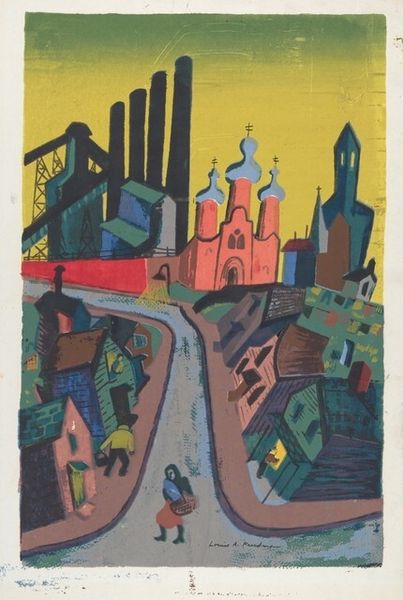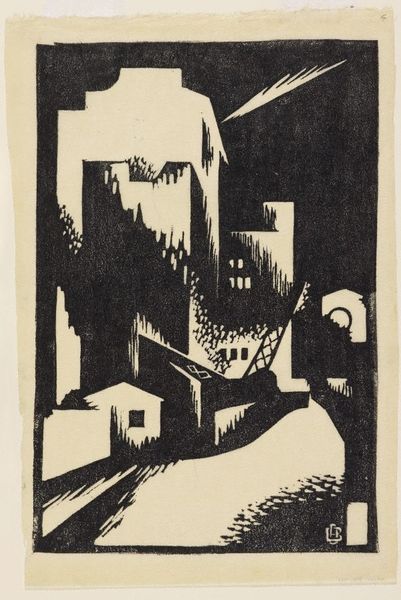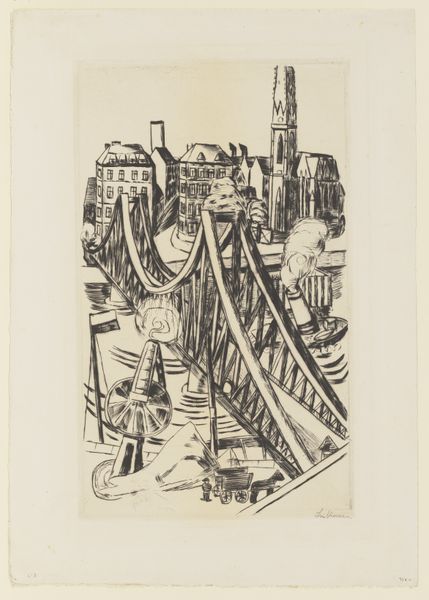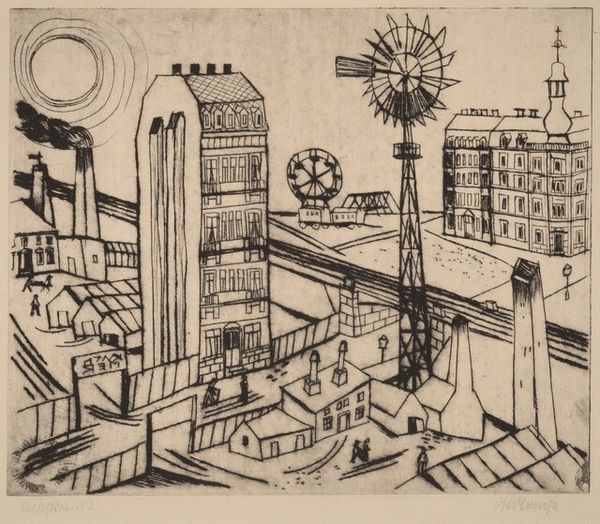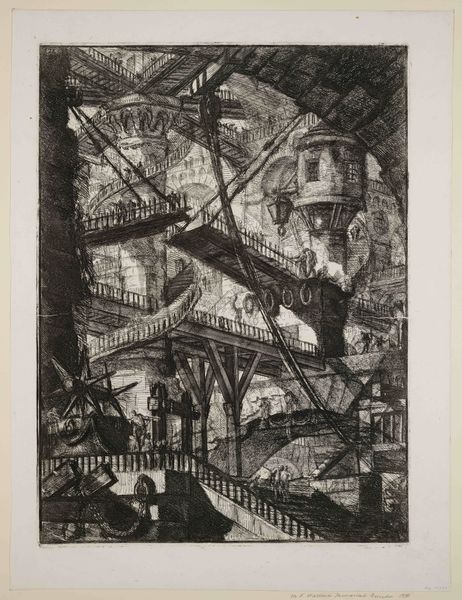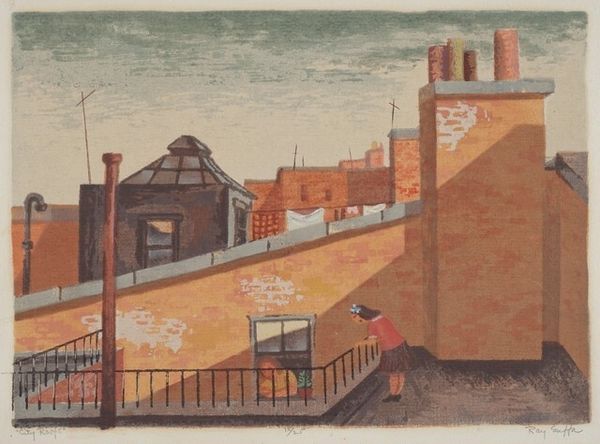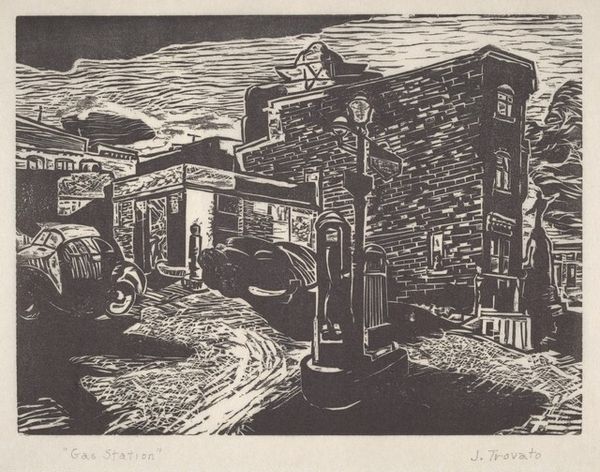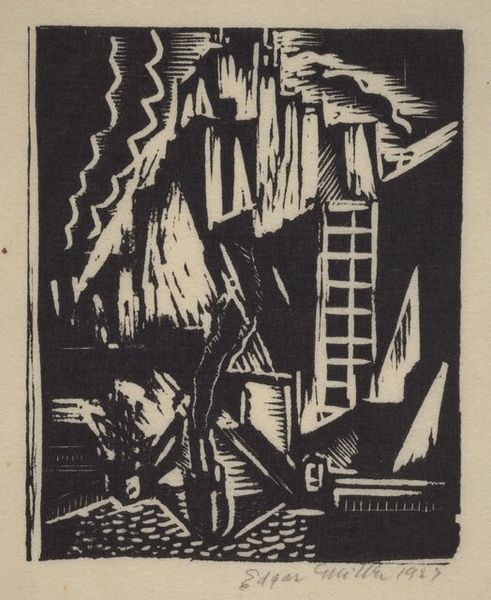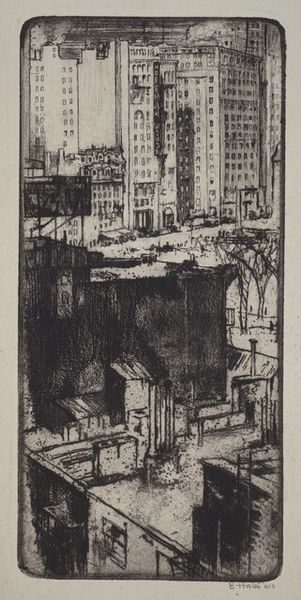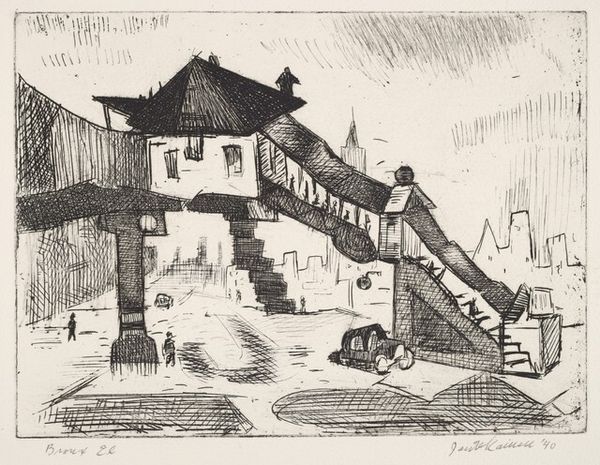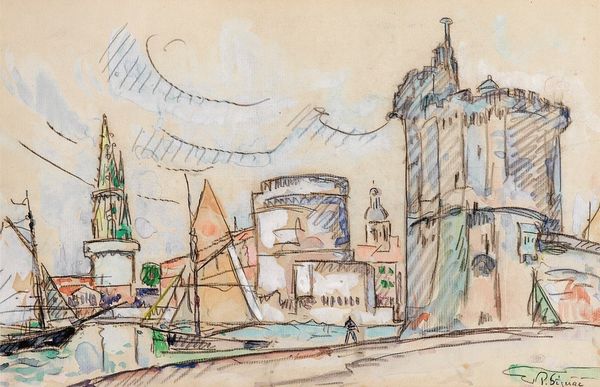
# print
#
cityscape
Dimensions: Image: 358 x 258 mm Sheet: 426 x 350 mm
Copyright: National Gallery of Art: CC0 1.0
Curator: Louise Arnstein Freedman created this print, titled "River Edge", in 1944. It is a cityscape rendered with flat, bold color. Editor: My initial response is a kind of anxious fascination. There's a bleakness here in the industrial forms and smoke plumes, but the unexpected bright colors create an almost seductive appeal. Curator: Exactly. Let's examine those colors. The dominant hues are saturated reds and yellows contrasted against cooler blues and grays. This interplay isn't merely decorative; it's a deliberate structural element that guides the viewer's eye. Note how the verticals of the chimneys in bright yellow are echoed in other yellow surfaces in the piece and in the smoke’s arcing forms. Editor: And that tension between the appealing colors and the subject matter feels incredibly relevant even today. Post-war industrial landscapes carried promises of progress and prosperity, but at a high cost for working-class communities, the environment, the people whose literal and figurative resources were exploited to achieve growth. Curator: A valid point. However, I would argue that focusing solely on the thematic content limits our appreciation of the artistic merit. The composition, with its flattened perspective and simplification of form, points to a sophisticated understanding of printmaking techniques and the legacy of cubism. Editor: But can we really divorce the aesthetic from the ethical? This "sophistication" of form, as you call it, exists within a specific historical and social context, one where the prioritization of industrial growth often overshadowed concerns for human well-being. This piece demands we consider how formal choices contribute to the work’s implicit ideology. Curator: Perhaps, but ultimately it’s Freedman’s masterful orchestration of color and form that endures. She transformed an ordinary scene into a striking and compelling image. Editor: It's an important reminder that the promises of modernity, the dream of technological advancement, continue to shape our world – often in ways that perpetuate inequality and environmental damage. Let us be mindful, therefore, of our responsibilities to resist all forms of oppression in our ever-changing landscape.
Comments
No comments
Be the first to comment and join the conversation on the ultimate creative platform.
